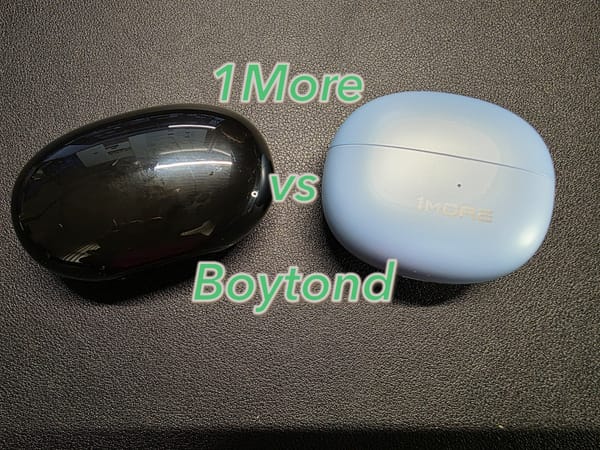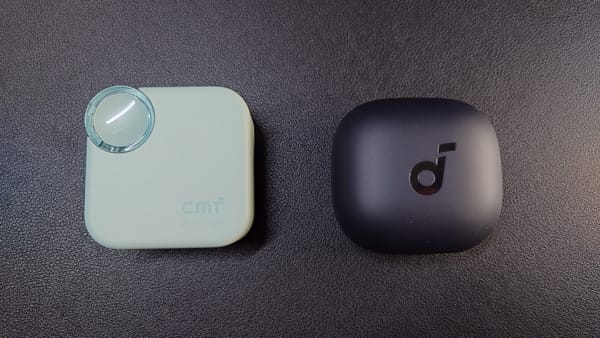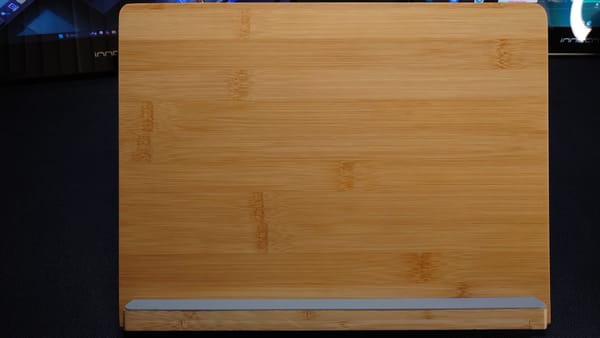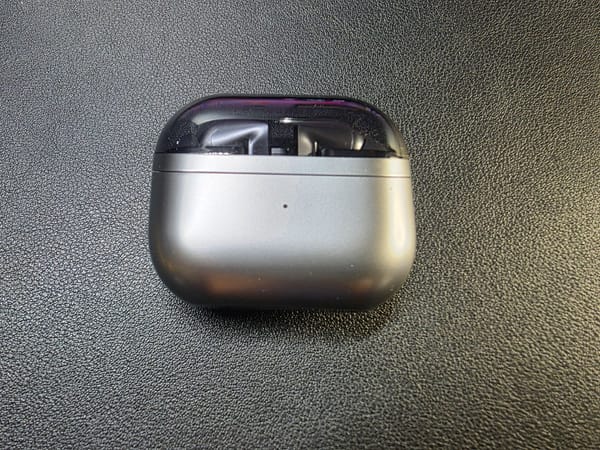USI v EMR Pen Experiences
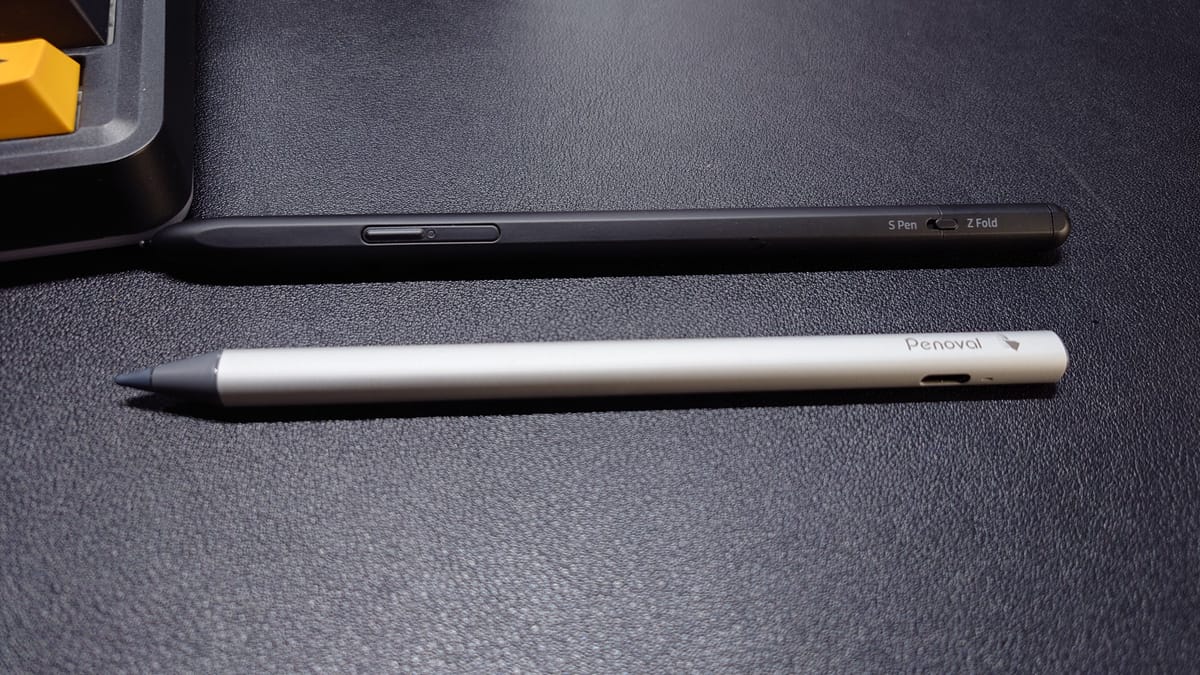
Suddenly, the pen stopped producing markings on the screen. Maybe it needs to be charged, I think. I plug it in, and the little red light comes on, indicating it’s charging. I wait a while and unplug it to use it again. I pick up my tablet and being writing. A few words appear... but then only faint markings. I realize it’s not [just] a charging issue. This is just a bad pen. Maybe it’s defective, maybe some charger I used didn’t sit well with it, but it is not working as intended. But I just got the Lenovo pen and installed a fresh battery in it, so I pull that out from the holder attached to the Chromebook Duet. It writes more smoothly, making me momentarily wonder if I’ve somehow been doing it wrong all along.
Scroll to the end for the demonstrative video experience.
I’ve written before about how I am a Wacom EMR snob when it comes to digital writing. It isn’t perfect, but when you understand its limitations and abilities for extension, it can be almost magical sometimes. Any Wacom EMR pen you buy will work. You can get a soft tip or a hard tip. There are specialty pens with novel and nostalgic designs with sizes and shapes to fit pretty much anyone. The pens themselves don’t need to be charged, but some companies (e.g. Samsung) add on extra functionality via Bluetooth to make the experience even more useful and unique. I have a small collection of Wacom EMR pens, some from the boxes of the devices they accompanied, but several others I purchased separately on their own because of some feature or trait they had that appealed to me. Outside of knock-off and capacitive pens that have proliferated over the years for the iPad, there probably isn’t another stylus ecosystem as robust as what exists for Wacom EMR. But I’ve also written of my dabbling in other pen technologies, including N-Trig/MPP, Wacom AES, and Apple’s Pencil. Up until now, the only widely known pen technology I hadn’t tried was USI. I also wasn’t initially in any hurry to try it out. But with time, as more devices came to support it beyond just Chromebooks, I decided I needed to experience it. How can I call myself a true digital pen enthusiast if I’ve not tried the latest new major pen technology?
I did not want to spend a lot of money on this experiment, so my first stop was to pick up an open box Chromebook Duet 3, a venerable 2-in-1 Chromebook with USI pen support that had been relatively well reviewed over the years. I no longer had a Chromebook in my device collection, having sold off my Chromebook Pixel Slate many years ago, so I could in theory attack two flying feather balls with one click. Using the Duet reminded me of how much I liked and had missed ChromeOS, which nowadays seems to serve largely as an Android laptop with a real browser and the ability to run Linux apps.
Pen support in ChromeOS is better than it is in "stock" Android, though. Outside of Samsung, who has invested many years in customizing their versions of Android for the S-Pen, most pen-enabled Android tablets don’t particularly impress with their pen functionality. Device makers point you to their note-taking apps (maybe, hopefully) and optimize that app for the best performance and use of the most pen features. Otherwise, perhaps you may be able to write in text fields and possibly some of Samsung’s pop-up menu features are mimicked. ChromeOS has a taskbar pen menu similar in spirit to the pen menu in Windows 11 and you can write in text fields. But I care mainly about the writing experience in my note-taking apps. I love my Onyx Boox Tab Ultra C the best for writing, but it doesn’t fare well with apps outside of the native note-taking app. I want to take notes in Goodnotes. I may want to jot something down in OneNote. I occasionally use Nebo and Metamoji Note. I’ve never really been able to have a good experience in these apps unless I’m using a Samsung tablet with S-Pen support. So how does the Chromebook fare?
Honestly? At first, I hated it. And in the end, I kinda still hate it a little bit. That is really all you need to know but you know I’m not going to stop there.
Having now spent some time with it, I tend to think the device I have was returned because of some internal performance issues, as it seems to struggle with everything, despite restarts and running only one app at a time. I do wish Best Buy had gone for the 8GB model instead of the 4GB model. I believed 5 years ago that no computer should come with only 4GB of RAM and I hold to that to this day. But I thought it would be fine if I kept my tabs to a minimum in Chrome and ran only 1 or 2 other apps in the background. But no app I tried - Squid, Keep, GoodNotes, or OneNote - performed well. I even broke down and bought the Lenovo pen designed for it and although it did write a little bit better than the generic USI pen I got from Amazon, it still wasn’t good enough for me to take notes with it. I would prefer to use the MPP pen on my OneXPlayer Pro 2, and if you’ve read my blog posts on my experience with that machine, you’ll know this is a damning statement on how bad writing on the Duet is in my experience. But I’d seen other people on YouTube writing on this device and their experience seemed marginally better than mine, so I’m blaming it on the device at this point. I was outside of my return window when I came to this conclusion, so now I had a choice to make: give up on USI or see if another device might yield a better result.
At first, I considered the Amazon Fire Max 11 because of its low price, especially around Black Friday and Cyber Monday. But I didn’t really want to deal with getting the Google Play Store installed on it to test all the apps I use and I feared some of them may not install due to the version of Android as I already have that issue with my Boox devices, none of which run anything newer than Android 11. So that left me with the Pixel Tablet. And as luck would have it, it was also on sale and I was able to find an open box deal for it as well.
I may write a separate post someday on my general experience with the Pixel Tablet, but I can report that using the Lenovo pen on it was much better than on the Duet. I could finally write and parse my own handwriting. It was actually good enough that I decided to go ahead and buy the USI pen everyone says is the best - the Penoval USI 2.0 stylus. And I do prefer it over the Lenovo, not just because charges via USB-C, but it’s also sleeker and fits better in tablet case pen loops.
USI may have technological aspects that are superior to Wacom EMR (e.g. resisting interference and not requiring special screen hardware), but the primary disadvantage it has in my mind is the lack of hover. With most Wacom tablets, you get a dot on the screen that shows where the pen tip will land and allows you to correct for any odd angle or alignment issues. For the most part, the tip writes where I expect it to and I’m able to adjust to it after a few strokes, but I would like to have the hovering dot throughout the user interface when just navigating the tablet as well. I will note that my e-ink tablets also don’t have the hovering dot, but because I use them with the pen almost exclusively in their note-taking apps, this seems to bother me less. I don’t generally use the pen to navigate my e-ink tablets. Nevertheless, for artists, I think the hover feature is important and that’s perhaps why Apple added it to their latest high-end pens and iPads. When navigating the home screen, icons will pop when the pen hovers over them and when in the browser, you will see hyperlinks pop as well and descriptors will sometimes appear for specific web addresses and email links.
Ultimately, I think USI is fine for notetaking but perhaps less so for artistry. I do think it is good enough on the Pixel Tablet for my notetaking needs, but the Pixel is really optimized for home use (on the speaker dock, which I do not have) and I'd be unlikely to have it with me in any scenario where I'd want to take notes away from my desk as I generally pick up a Samsung tablet or my OneXPlayer 2 Pro if I'm leaving the house.
But I *could* use the Pixel if I wanted to, and at this point, that's probably the highest praise an EMR pen snob could give it.
